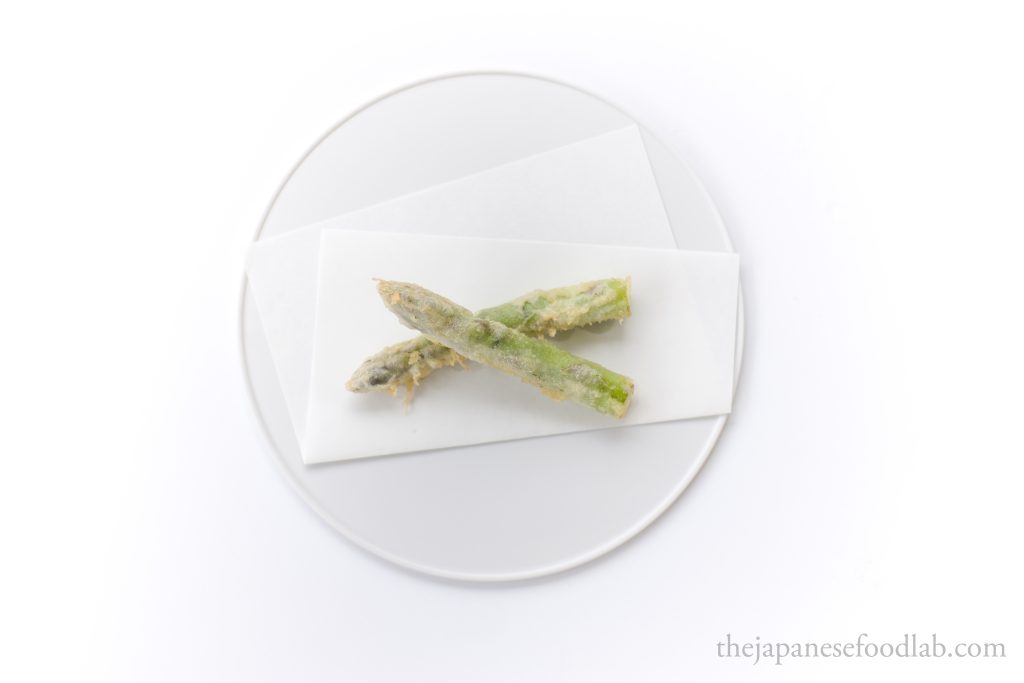
We are extremely excited to elaborate on our recipe for asparagus tempura as we believe it exemplifies the respect and care towards ingredients that underpins all avenues of Japanese cuisine, from traditional sushi all the way to making miso.
Asparagus is not a commonly found ingredient in Japan and tends only to be grown by specialized farms locally, or imported from overseas. Some local farmers also approach asparagus growing in the same way as Japanese luxury gift fruits, where lots of time and resources are invested in only a small amount of asparagus in an attempt to produce the most premium and perfect crop. The most sought after of these asparagus can sell for up to hundreds of dollars per bunch. As such, asparagus is typically considered as a luxury ingredient and can usually be found in high end restaurants in Japan.
Given the cost associated with sourcing information, chefs in Japan have merged techniques associated with western food preparation with modern day tempura ideology.
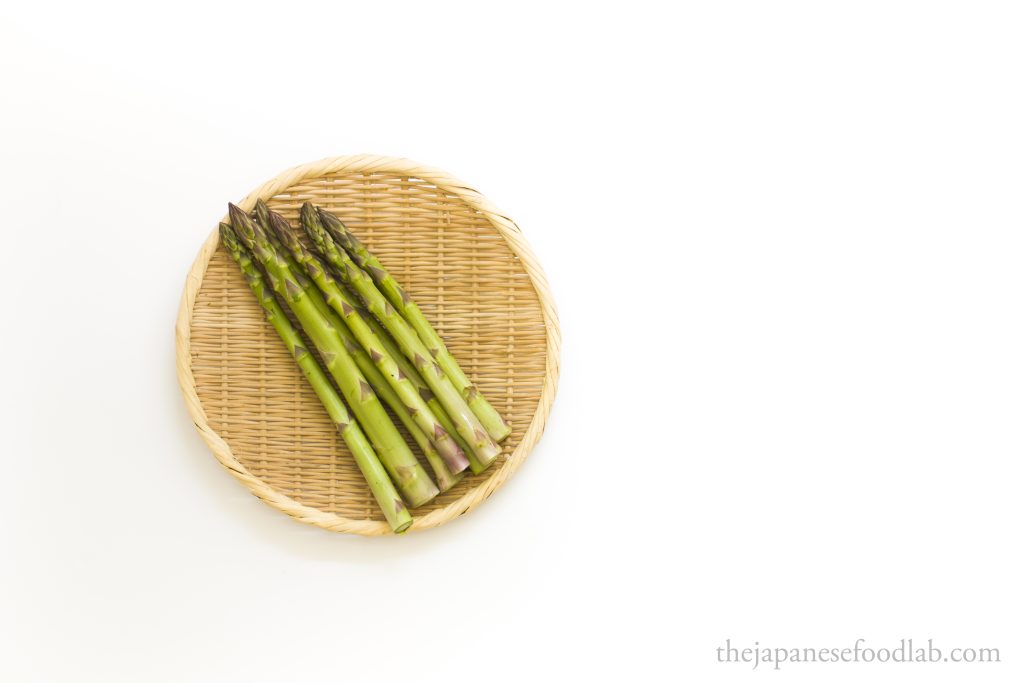
How to choose asparagus for tempura
Following our article on the science of tempura, water inside food boils and steams during deep frying, dehydrating the food and concentrating the flavor. If left for too long, almost all the water will have evaporated and the food dries out and overcooks, permanently modifying the texture of the food.
The rate at which this occurs is dependent on the food’s surface area to volume ratio. Food with a much higher surface area to volume ratio, like kasugo or kisu, cooks much faster as there is a larger contact area for heat conduction and water loss.
When it comes to asparagus, this causes a predicament. The sweetness of asparagus is drawn out through the breakdown of starch into sugars though longer cooking times. While the rate of this reaction is increased by the high heat from the frying ol, it is still a relatively slow process. This means that asparagus, with a high surface area to volume ratio due to its long and thin shape, has a tendency to overcook before its maximum sweetness has been achieved.
To overcome this, you’ll see that many chefs try as best as possible to source asparagus with a thick diameter in contrast to the long and thin asparagus that you’d usually find in a supermarket. Thicker asparagus, with their lower surface area to volume ratio, allow them to be submerged in the hot oil for a much longer period of time without overcooking, thus making it possible to draw out and caramelize the sugars in the asparagus.
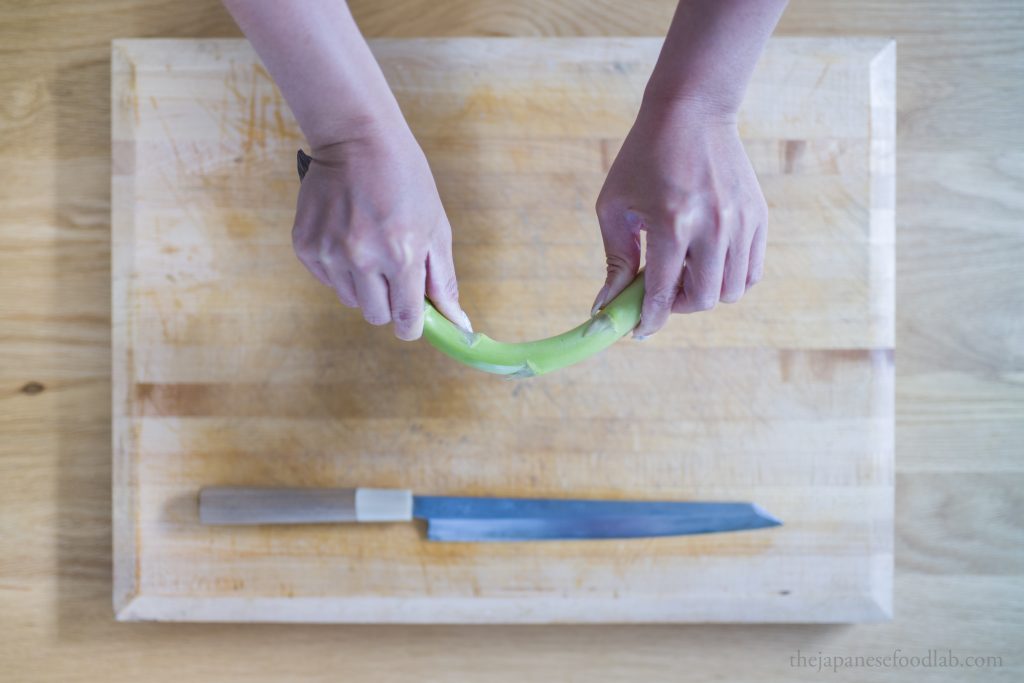
The key ideas behind tasty asparagus tempura
Now that you’ve picked your asparagus, the next step is to determine where to cut your asparagus.
As anyone who prepares or eats asparagus knows, the tip is the sweetest and most tender part of the asparagus. As you move downwards, the asparagus becomes less sweet and more fibrous as you approach the older segments, down to the point of inedibility close to the roots.
Following conventional wisdom found in kitchens all over the world, the best way to determine where edibility begins in a stalk of asparagus is to gently bend the lower end of the stalk until it snaps off gently. The part where it naturally snaps off is where the edible part of the asparagus begins, with the lower tougher ends sometimes being blended into soup if not too fibrous.
Even along the entire length of the edible asparagus stalk, there still exists variations in taste and texture.
The lower end of the stalk is still noticeably more fibrous than the tip and whilst the tip is the sweetest part, the lower end has the deepest and most complex flavor. To showcase this difference, some tempura chefs opt to serve the bottom third of the asparagus tip separately, while frying the upper two thirds as normal.
To cook the bottom part, the stove is simply switched off, and the stalk is fried using residual heat. This allows the stalk to fry for a much longer period of time at low heat, tenderizing the fibers and drawing out some amount of sweetness. To judge when it has finished cooking, one simply needs to check the color on the end of the stalk, which should be a deep golden brown from the caramelized sugars.
How to make asparagus tempura
Thick asparagus stalks
40ml of ice (2 ice cubes)
180ml of sparkling cold water
1 egg (around 50g yolk and whites included)
100g of cake flour (or any other low protein flour)
To begin, start preheating your frying pot with oil to a target temperature of 175°C. While the oil is preheating, snap off the end of the asparagus stalk.
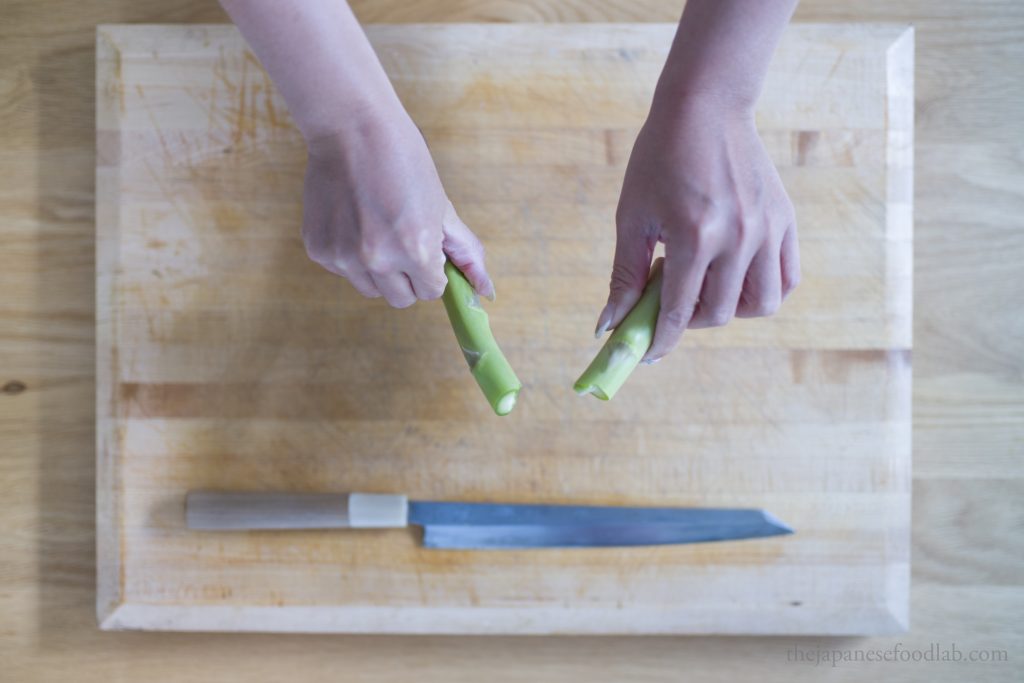
Cut off end of the asparagus stalk where it was snapped to make a smooth surface.
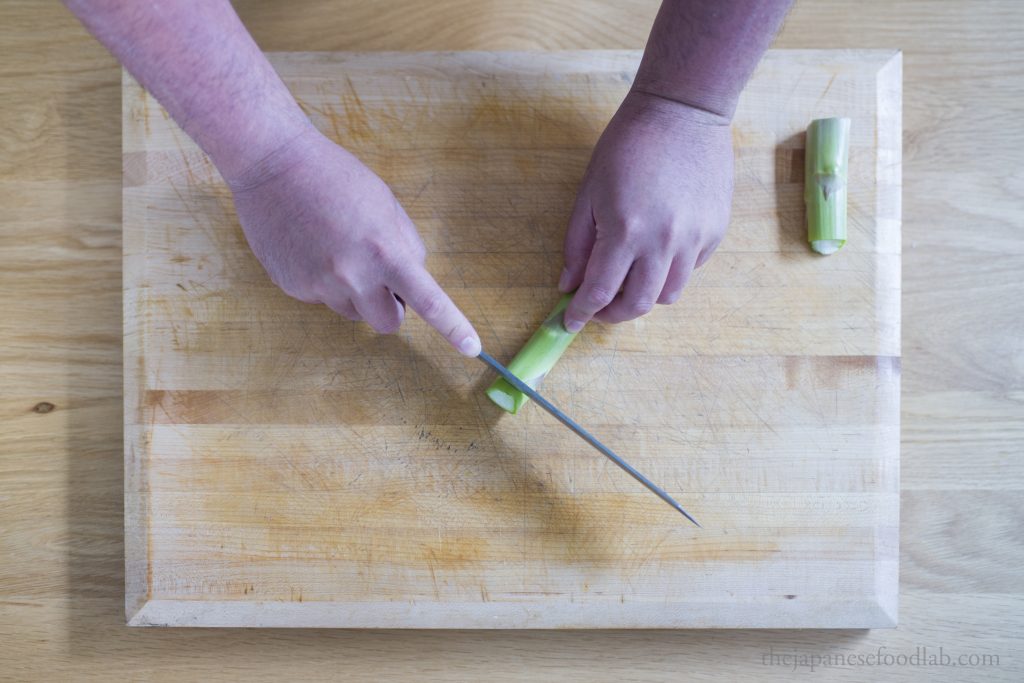
Cut off the bottom third of the remaining asparagus to be cooked later.
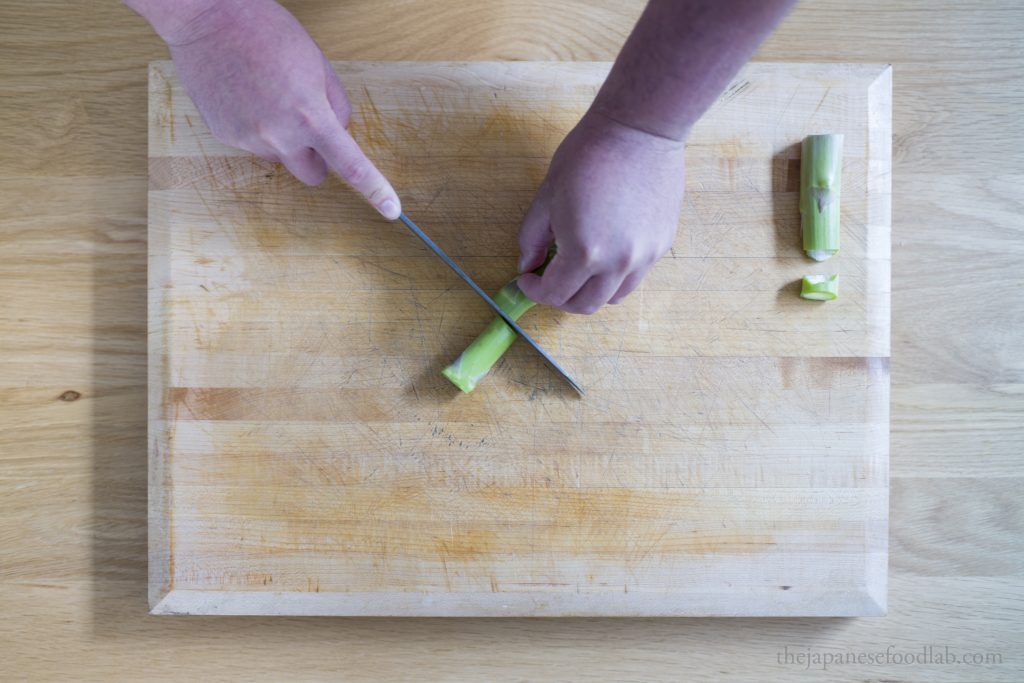
To make your tempura batter, mix the egg with the cold water in a mixing bowl and whisk vigorously for 30 seconds until fluffy. Add in the ice cubes and shift in the cake flour before whisking until combined. Set over an ice bath.
When the oil has reached your desired temperature, dip in the upper two third stalks of asparagus into the tempura batter before frying.
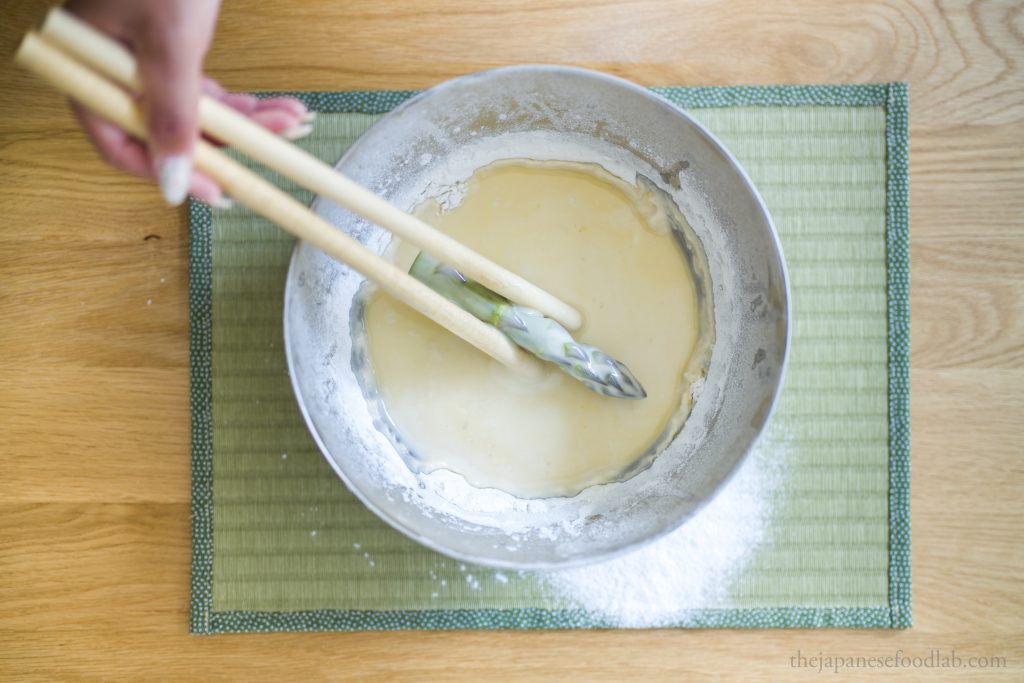
Fry until the batter is golden and the bubbles start becoming smaller.
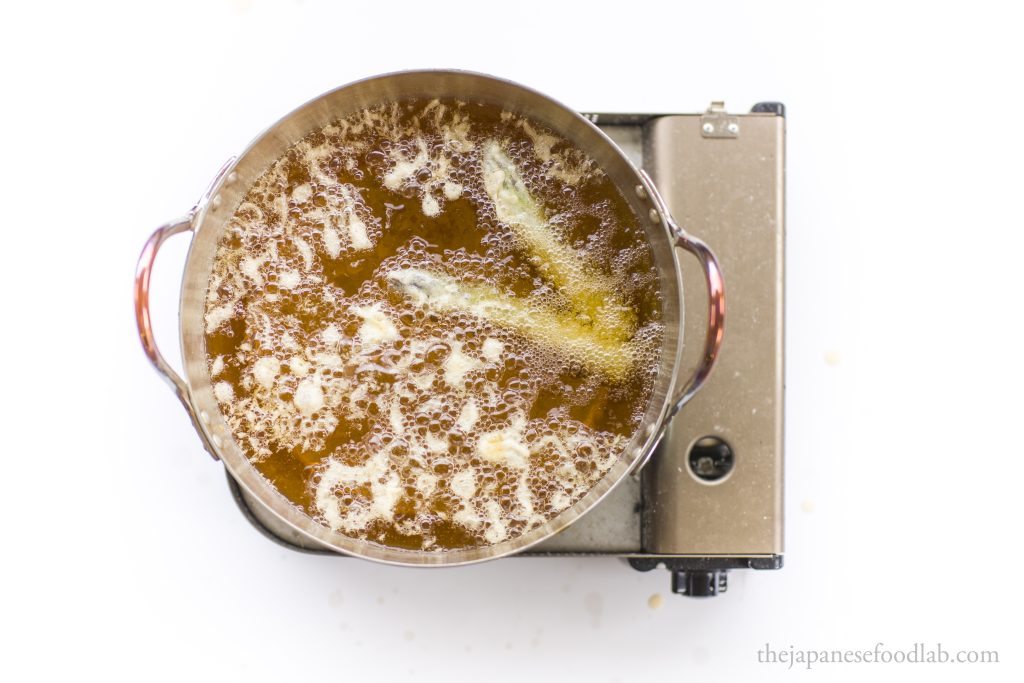
Remove from the oil and allow to rest on a wire rack to remove excess oil before serving. Use a sieve to remove any excess tempura batter.
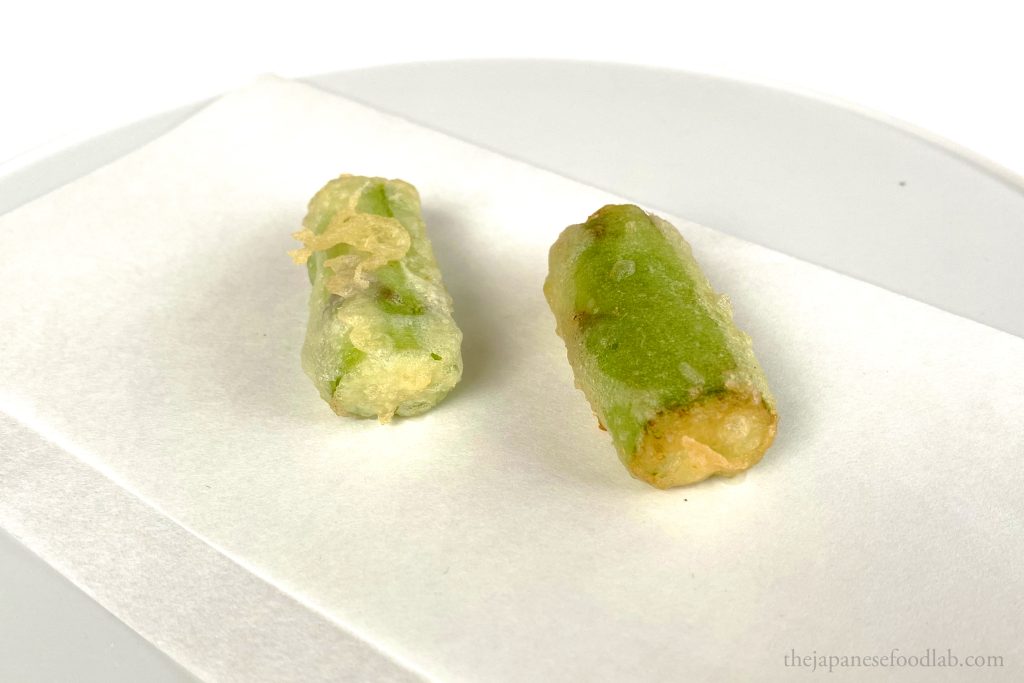
Once all the stalks of asparagus are fried, turn off the heat. Dip the lower thirds of the asparagus into the batter and fry using the residual heat of the oil. The stalks might sink to the bottom for a while before floating to the top. Fry until the ends of the asparagus brown ever so slightly.
Notes:
To learn more about our philosophy behind making tempura batter, read our article on the science of tempura batter.